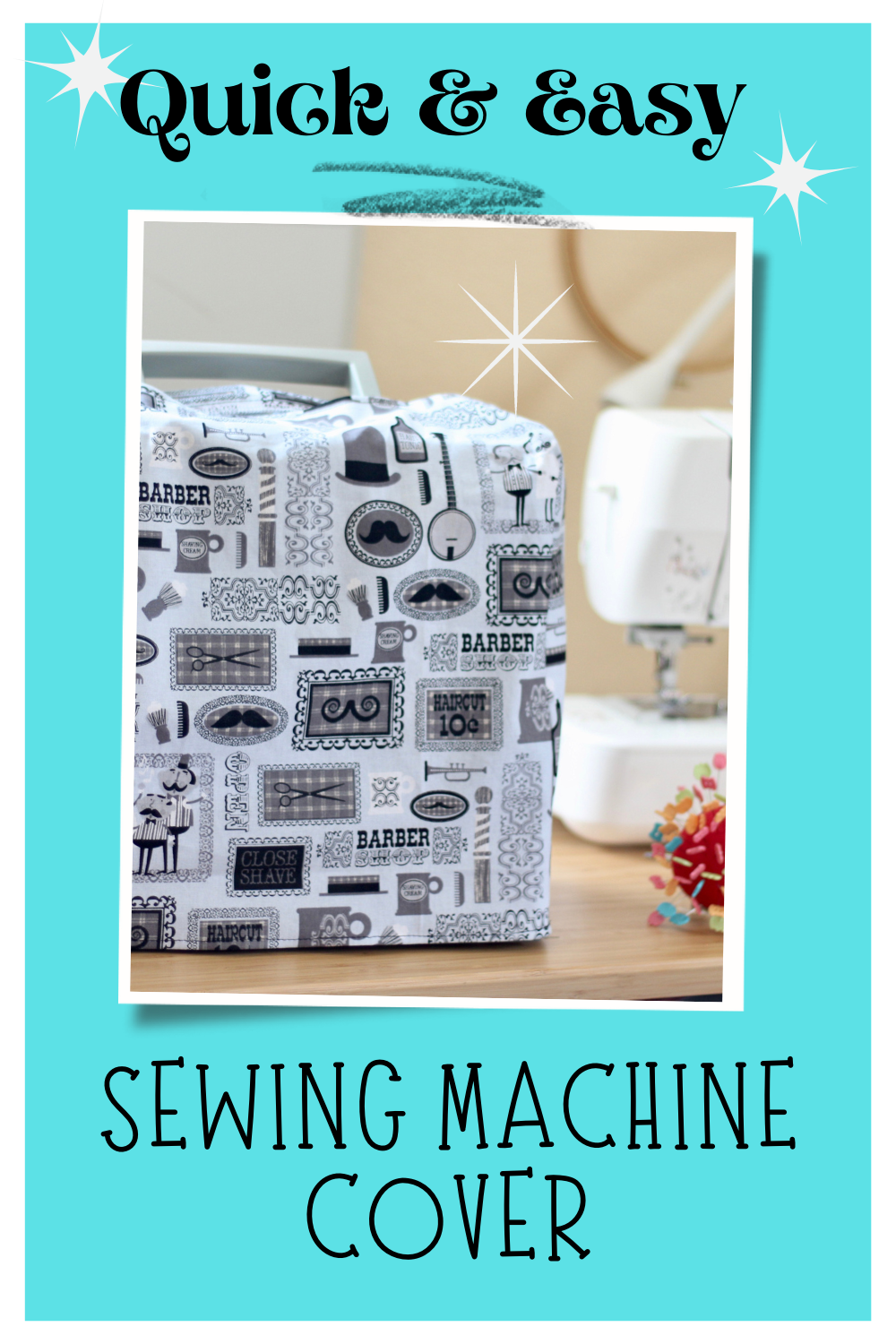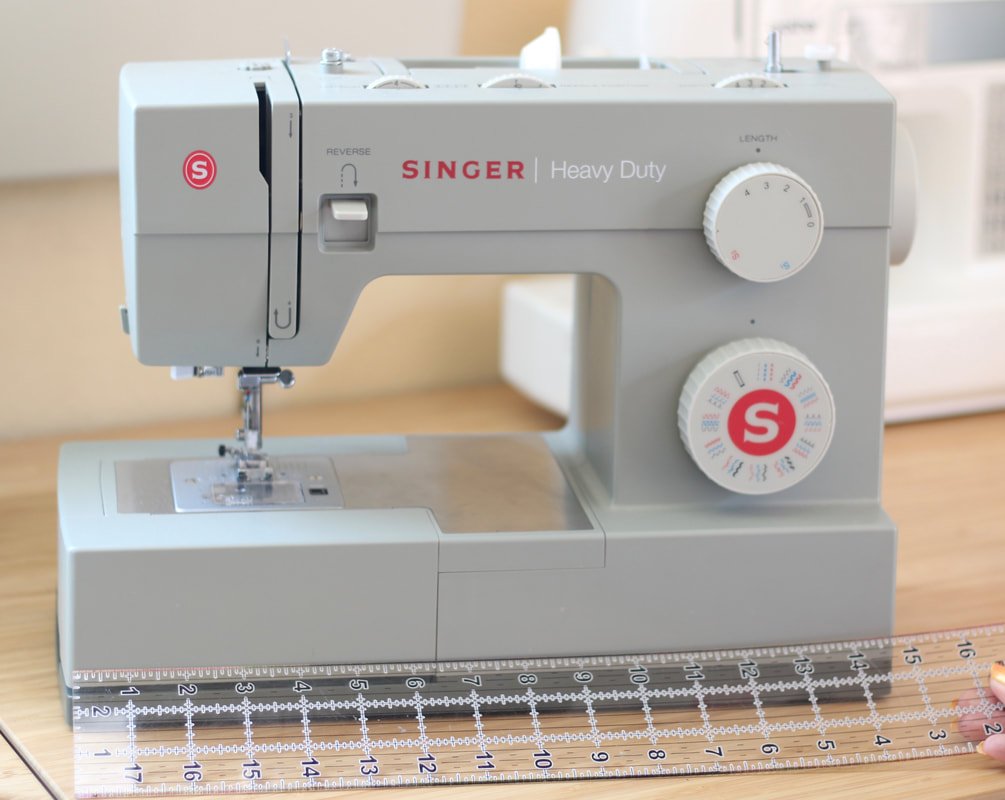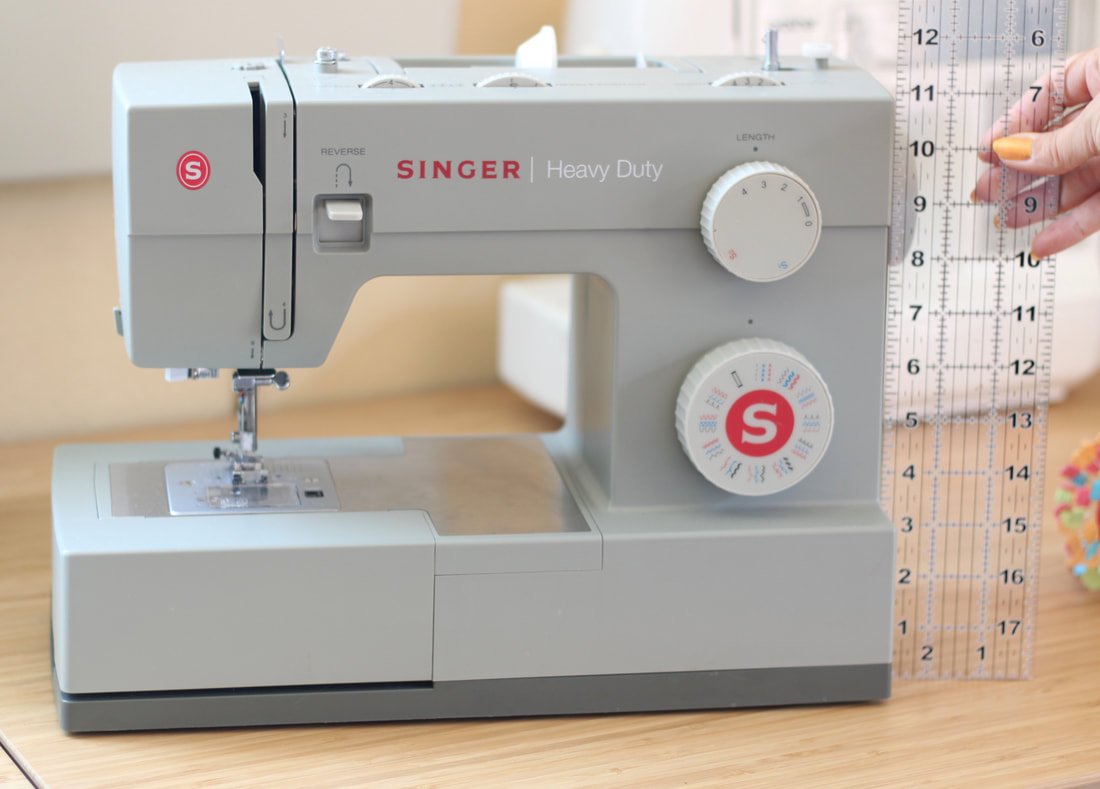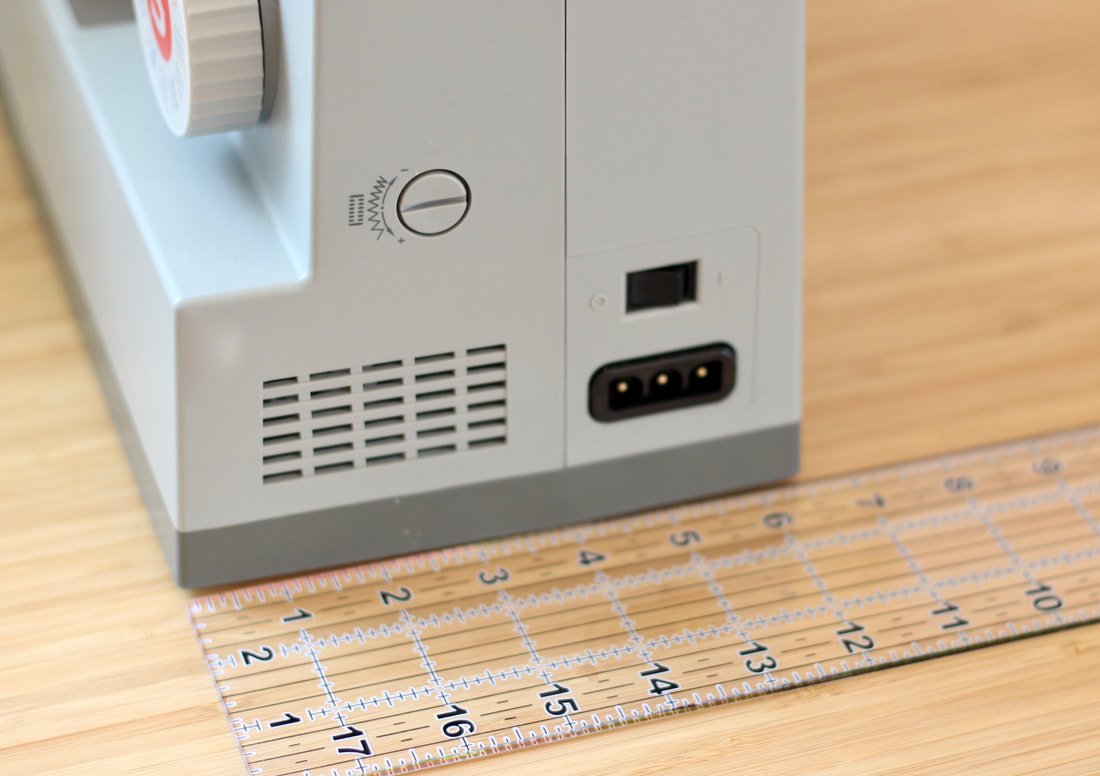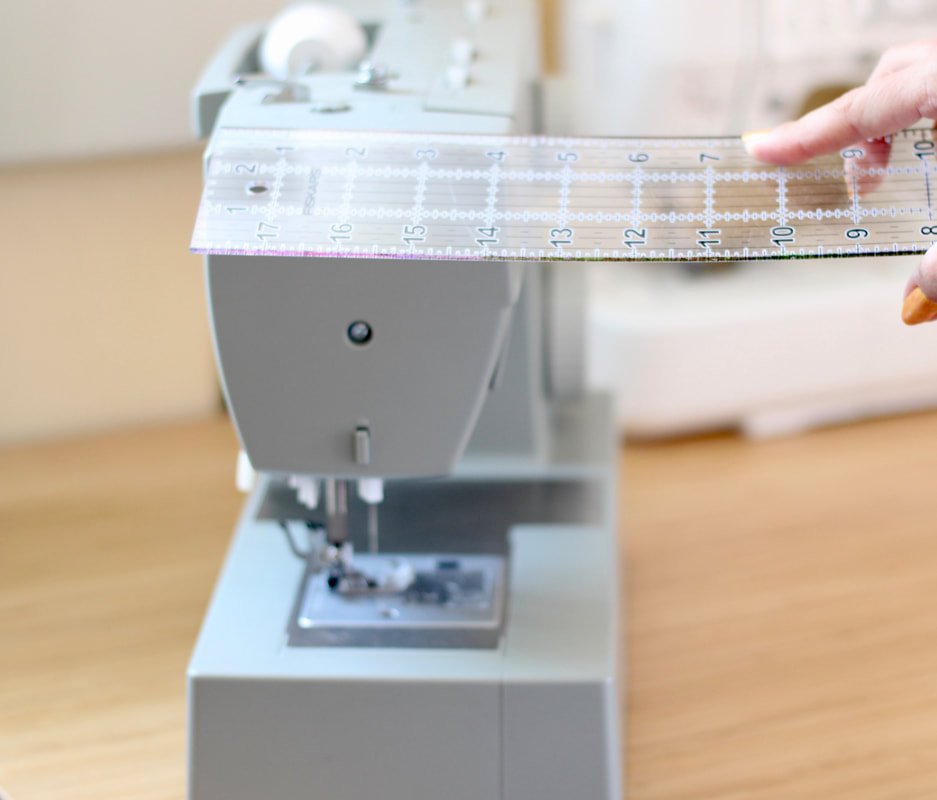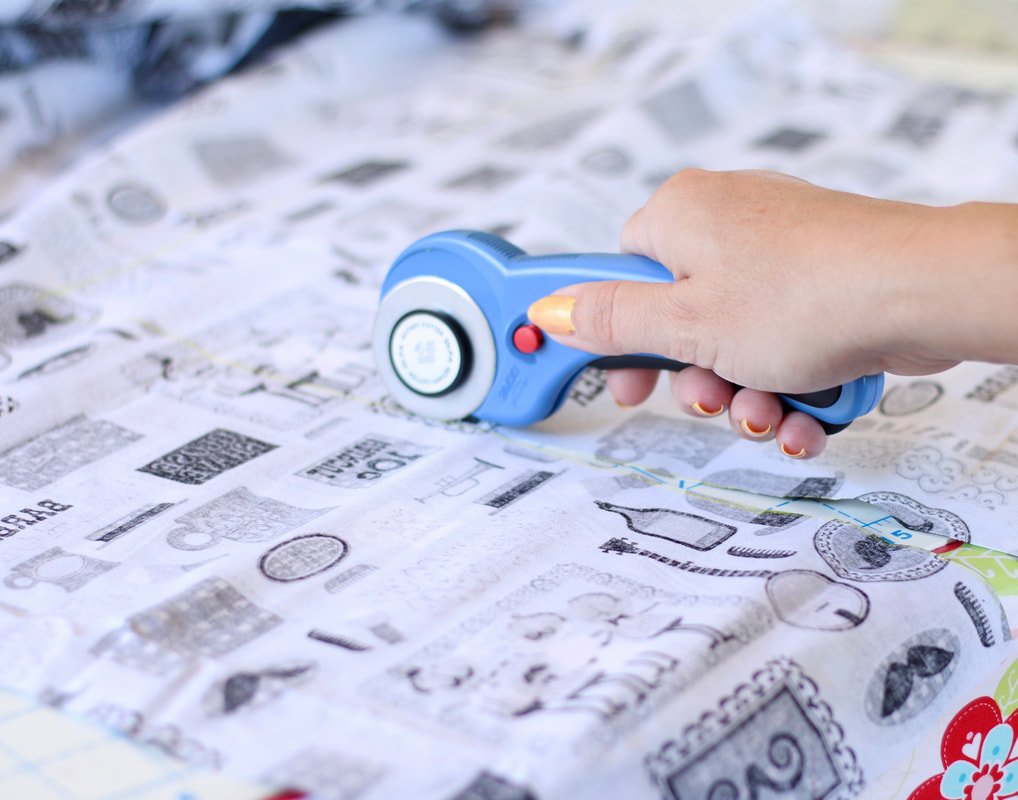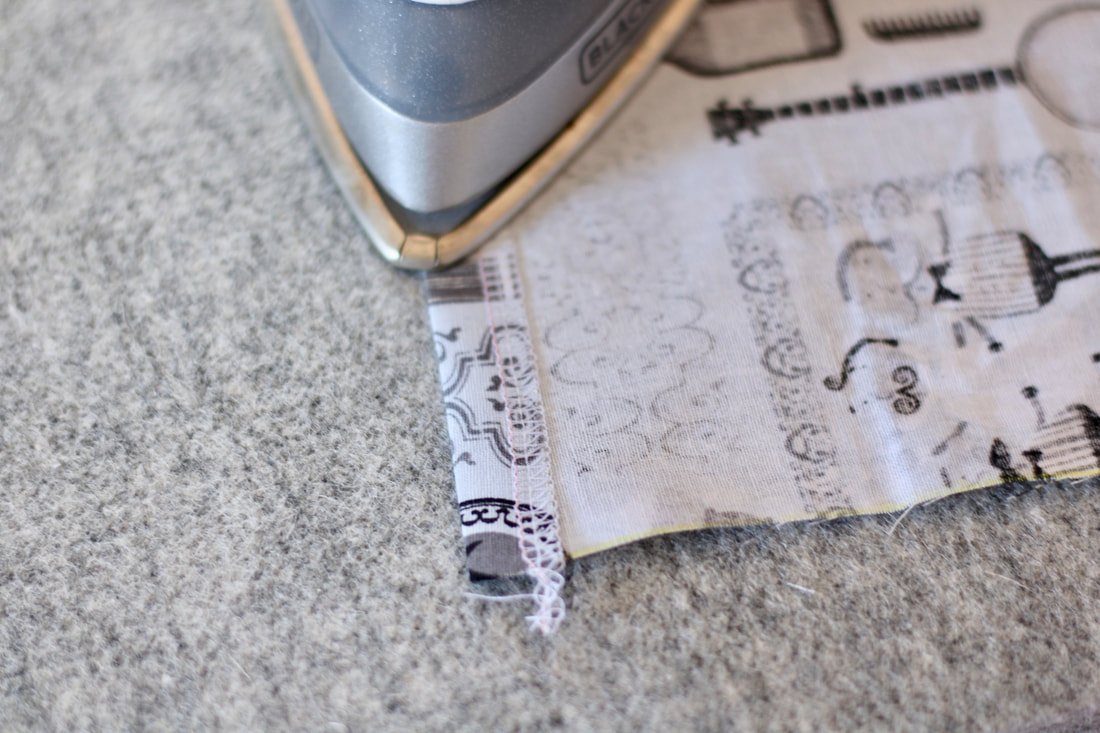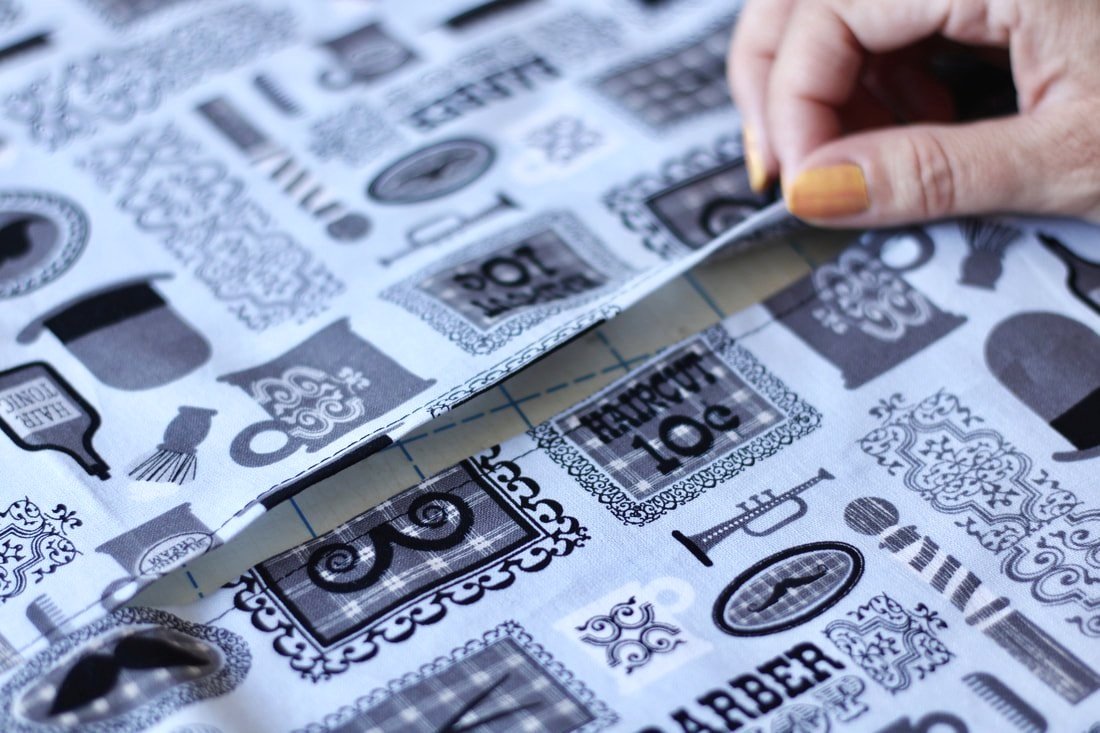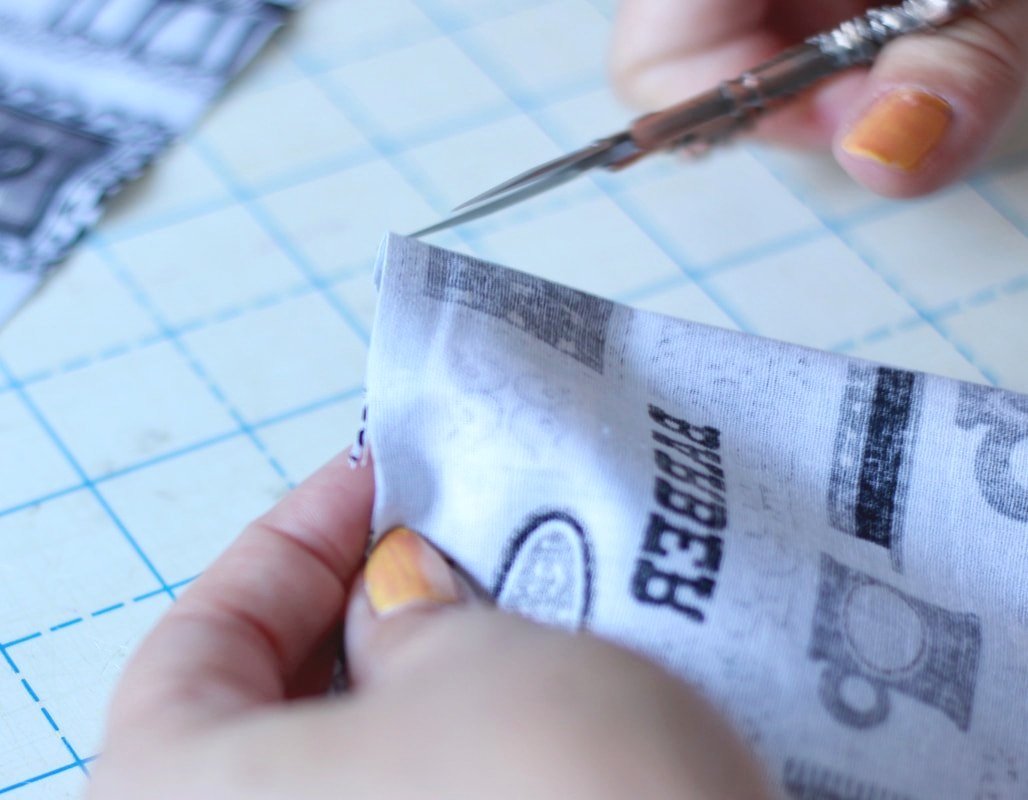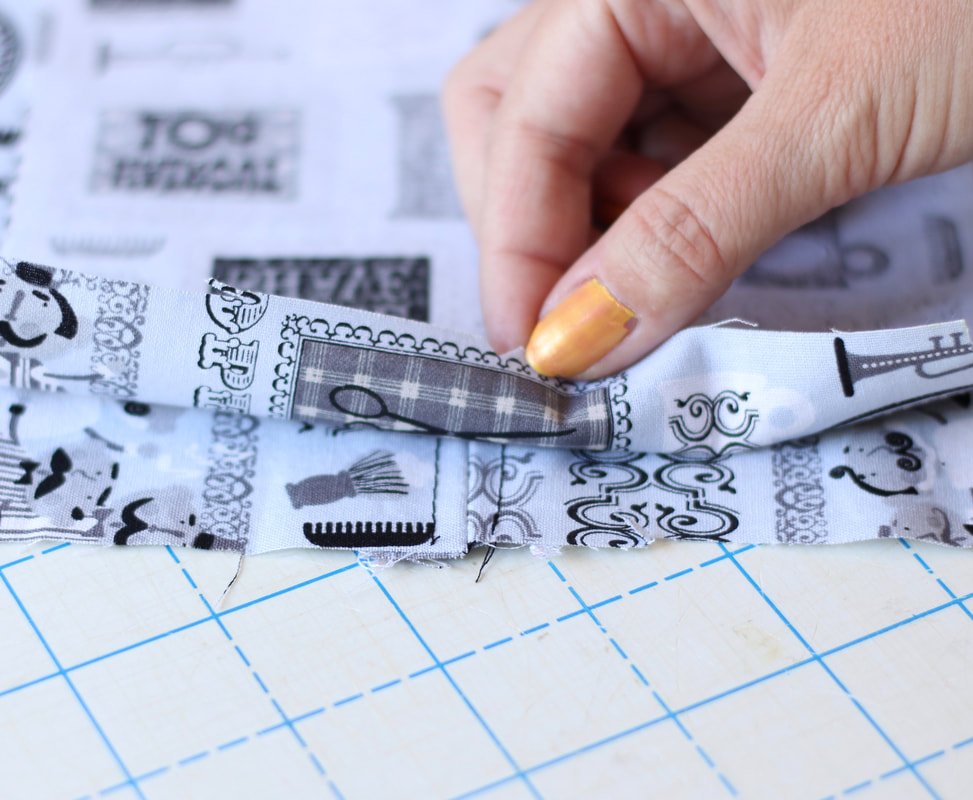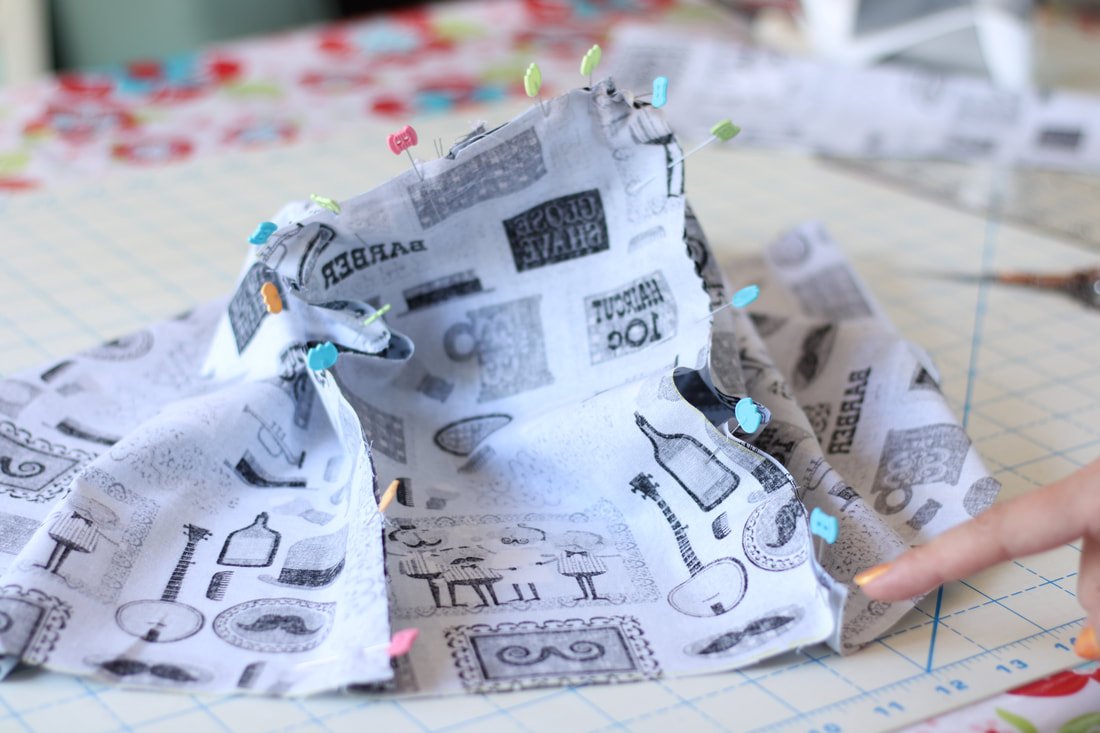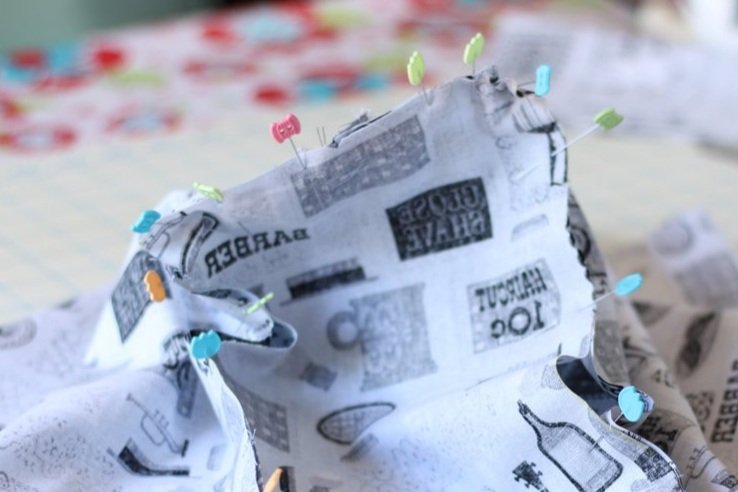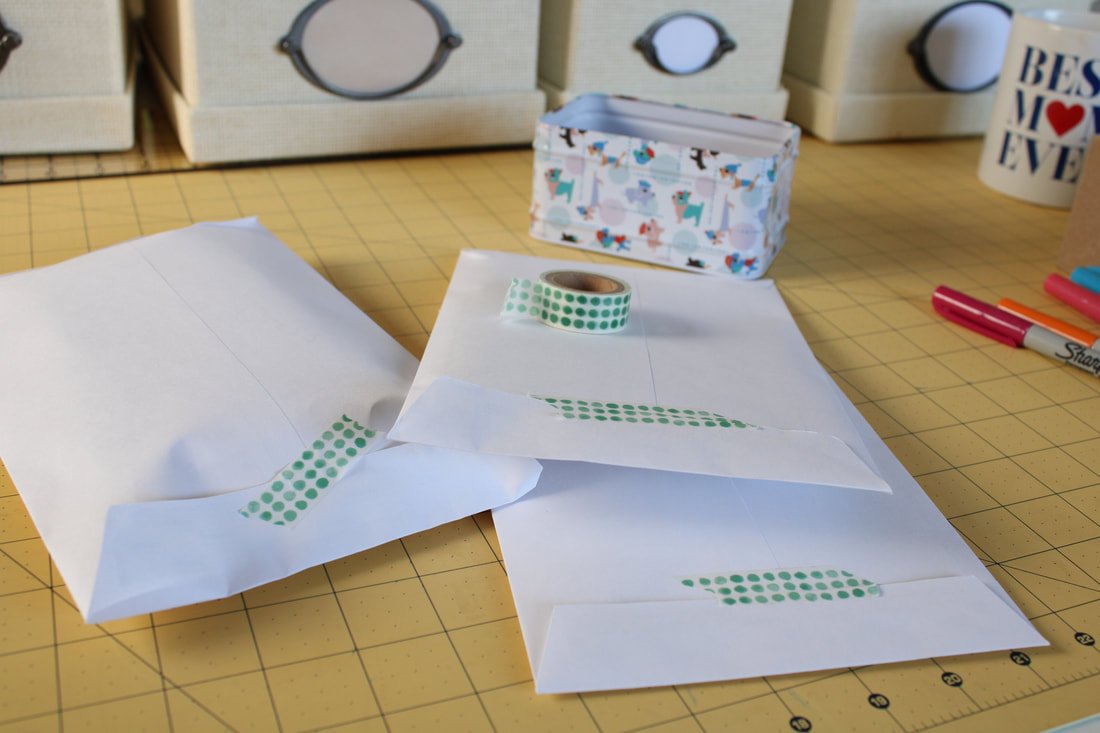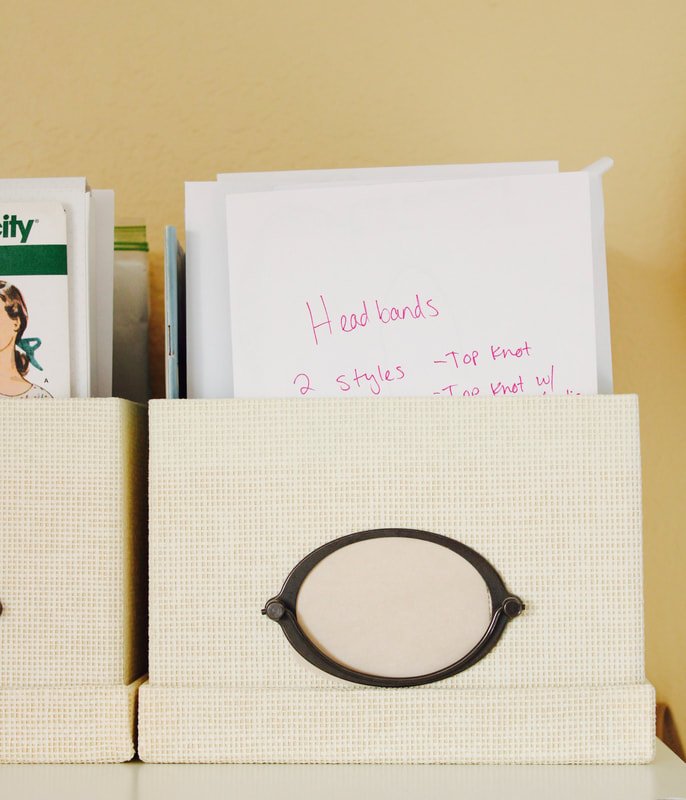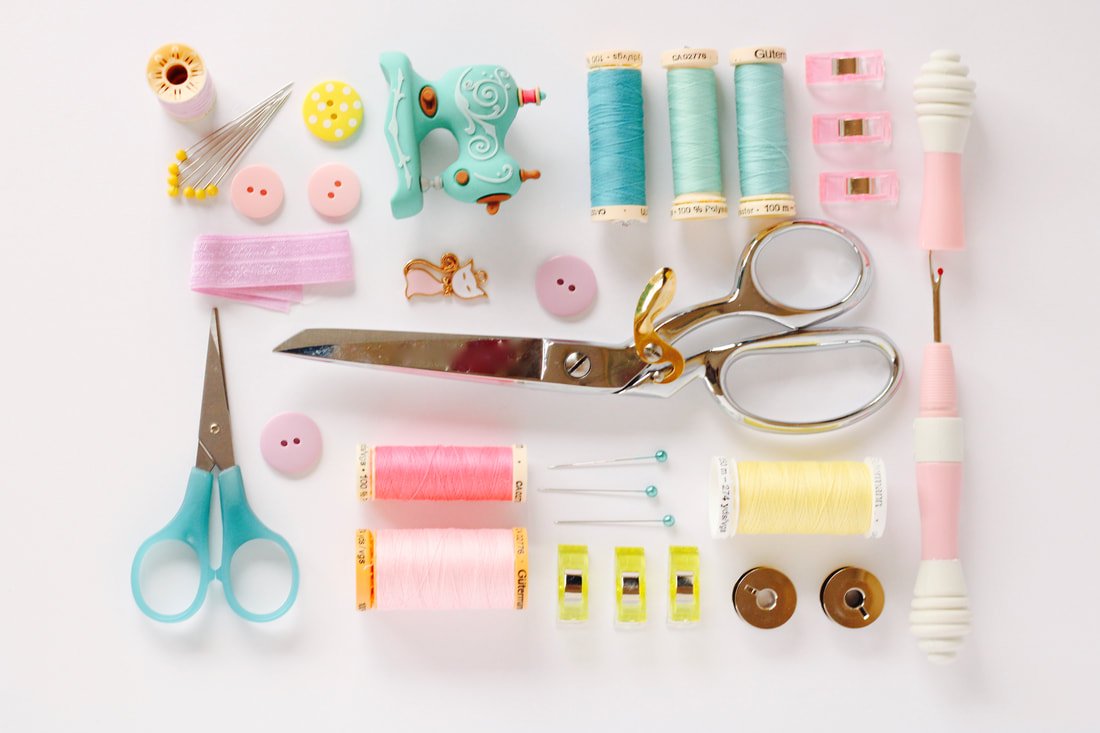
Pattern Reviews, Sewing Hacks, Tips & Free Patterns
Sewing Blog Besties
DIY Easy Sewing Machine Cover
Sew a cover for your sewing machine. Free pattern that’s easy and customizable. Sewing machine tutorial pattern on how to sew a cover.
Is your sewing machine looking a tad boring? If it's a newer sewing machine, the answer is probably yes. The newer ones lack style and color. If it's a vintage machine, the answer is probably no. It's already gorgeous and full of vintage flair! Either way, let's add some new life to your machine with a dust cover. They're easy to sew and you can make one for all of your machines.
Back in the early pandemic days, mask-making was a big thing in this house and my husband bought himself a Singer machine. I'm a Brother fan through and through but, he liked the Singer's grey color. Of course, it's been sitting for over a year, untouched, and needs a little makeover. It's going to get a new fabric cover!
Let's make an easy sewing machine cover. You'll learn how to get the measurements and sew one up in an hour. Covers add fun to your sewing space and they keep your machine protected as well. Dust be gone! Speaking of dust begone, we just changed our AC filters. YIKES! They were long overdue. This is a friendly reminder to change your filters if you have an AC. ;) Go now, I'll wait.
Supply List
1/2 yard of fabric. Cotton, vinyl, canvas, denim, use whatever you want here.
Matching thread
Sewing notions: scissors, a marking tool, pins, etc.
Ruler
Serger for raw edges, or use a zigzag stitch if your machine has it
Sewing machine
Grab some paper, a pen, and a ruler. You can use a tape measure but, the hard ruler makes it a little easier to get an exact measurement.
Measure all the sides of your machine.
Time for Math, (insert tears here).
Now it's time for some math. I don't do math so, hopefully, I explain this correctly.
You'll be using a 1/2" seam allowance. So, you'll add 1" to each measurement number. (Each seam takes half of that inch.)
My machine is 12" tall by 15" wide. So, I'll add 1" to both of the measurements.
12 + 1 = 13. 15 + 1 = 16. So, my final rectangle will be 13x16. But, we're not done yet.
Next, you'll add 2" to your height. This will allow the front and back to "roll over" the top.
The new measurement will be 14x16. These will be my front and back pieces. Cut 2.
* If your machine is extra deep, you may need to add more than 2" to the top height.
The sides will need 1" added to your measurements.
My side measurements are 6.5" by 4". Add 1" to each and they'll be 7.5" by 5". *If your top is narrower than your bottom, use your ruler to connect the top and bottom lines to form a trapezoid (a pyramid with the top cut off). Cut 2 mirrored. There might be a left and right side due to the angles. ;)
I hope I explained this correctly. Math is not my strong suit, so send me a message or leave a comment if you need help. I'll try my best to help, but no promises. ;) LOL Others might offer help in the comment section too.
Bonus tip
Cut out your 4 fabric pieces. You should have 2 sides and 2 front/back pieces.
This is where you can have fun and make it your own. Cut out four different colored fabrics or use different fabrics for the sides. You could piece together different fabrics to make a quilted look, or add some embroidery to the front. The possibilities are endless.
OPTIONAL:
If you do add embroidery or make a quilted one, you might want to line yours.
In this case, sew 2 covers the same size, pin right sides together, and sew along the bottom edge, leaving a 3" gap for turning out. Top stitch the bottom to close the gap and you'll have the embroidery stitches/quilting seams enclosed.
Using the rotary cutter and mat for the rectangles.
Sewing Time
Start by serging or zigzagging along the top edge of the front and back pieces only.
Fold the serged edge down 1/2", then press. Topstitch 1/4" away from the edge. You're going to create a slit opening for your handle. *You can skip this part if you want. But, it's nice to have access to the handle when taking the machine to the repair shop or moving it to another spot in your sewing space.
Place both pieces RST (right sides together) and pin 2-3" from the sides, leaving the middle unpinned. You may need to adjust this measurement according to your machine. Sew from the side edge to the pins, only. Don't forget to backstitch.
The middle will be left open for the handle to pop out of.
Take a side piece, and fold it in half to find the center top. Make a little snip or mark with a pen. Do the same to the other side piece.
Next, pin the side piece to one front/back Right sides together, by starting at the top. Put a few pins at the top, then go down to the bottom and start pinning upwards from there. This ensures your hem matches up. Next, you'll want to ease the curve of your corners. This may get wonky but, pin as well as you can. It doesn't need to be perfect.
Sew, using a 1/2" seam allowance.
It may be helpful to sew from one end upwards as far as you can go. Then, sew from the other end up and around the curve. Puckers might happen, but this way felt easier to me.
After one side is sewn, try it on the machine. Check the fit. Is it too long? Will the other side fit properly? Does it hang like a baggy bag? If there are any issues, fix them now.
If it's too big, make the seam allowance larger. (Use 3/4"-1")
If it's too small, unpick it and make the seam allowance smaller. (Use 1/4" instead)
If it's too long, trim away the excess or make a deeper hem. (Make a 1" hem)
Luckily the sewing Gods were on my side and I was fortunate for mine to fit perfectly. Yay, math was on my side, for once.
If it fits perfectly, move on to pin and sew the other side piece. Go about it the same way you did with the last side piece. After it's sewn, give the seams a good press. Slip it over your machine and admire it for a few seconds.
You're almost done. The hem is all that's left to do.
Serge or zigzag around the bottom edge. Fold up 1/2" and press. Topstitch and you're done.
If the bottom is too short because math is hard, just add a strip of ribbon or pom pom trim. It'll look like you did it on purpose. ;)
Easiest hem ever, serged edge and folded over once.
My husbands sewing machine will be dust free now.
Hole for the carrying handle.
Ta-da! Now go give your sewing machine some flair and keep it dust-free.
If you make one for your machine, tag me on Instagram @sewingtothemoon. I'd love to see what you create. Now, I am off to sew a new cover for my serger.
Happy sewing,
Annette
How to Organize Sewing Patterns
How to organize your sewing space. Store all of your sewing patterns in an easy way so you can find everything quickly.
Do you get the organizing bug after the holidays? I know I do. Remember Kon Mari? Yep, my closet and dresser clothes are still organized and folded with her method. It's been a couple of years and I need to revisit my dresser. But we'll save that for another day. Today I want to share with you how I organize my patterns.
I have quite a few patterns for sewing although, not nearly as many as other sewists, I know. I have friends who have bins upon bins of sewing patterns.
In my stash, I have PDF ones, traced-off ones, patterns that have been adjusted and re-adjusted again, and of course regular pattern envelopes. I keep all of my patterns intermingled. However, they get separated by category. I'm not completely crazy. Ha!
Start with your PDF Patterns
Here's what you'll need:
Box of envelopes
Marker and washi tape
Clips (optional)
Boxes or bins to fit the patterns inside
The Process
Go to your local office supply store and grab a box of 6x9 envelopes. They had white and manilla colors to choose from when I went. The box was about $15. It may cost more or less depending on how many are in the box. White seemed to be more expensive but, I liked the clean look of white so that's what I bought. You could order online too, I'm sure.
Grab all the PDF patterns you have. If they aren't printed and are still living in the eternal bliss of your computer, don't print them off. Save that for another day.
Fold each pattern into a 5 x 8 size. Include every piece to that pattern in the folding process. I used a wonder clip to keep all of the pieces together and folded up. And, then I stuck them in a big pile, as you can see above. I chose to fold first, then stuff. But, you can tackle it however you'd like.
Grab a pattern from the pile. Write that pattern number, brand, size, etc. on the front of the envelope.
Then, stuff the folded pattern pieces inside the envelope. I used a piece of washi tape to close the envelope. There were a few patterns that needed a few pieces of tape. ;)
Repeat until all the PDF's are in envelopes.
I had a bunch of cute boxes with lids that I purchased years ago from IKEA. They kept crafty items organized inside them. 2 years ago, I took out the built-in shelves and redid our bonus room. The boxes were no longer needed. But, I didn't want to throw them away because I knew I'd use them eventually.
Fast forward to eventually.
They were the perfect size for my patterns!! I tucked the lids under the boxes and my envelopes fit inside. If you have a few shoeboxes lying around that are empty, cover them with pretty paper, spray paint, or wrapping paper. Your envelopes will fit perfectly inside
Pattern Envelopes
Now that your PDF's are neatly organized, stick your other pattern envelopes inside the boxes too. I chose to organize mine by category.
My patterns used to live in a huge bin (the blue box) and I couldn't easily find what I was looking for.
Just an FYI, the organization day got uglier before it got pretty. Sorta like most organizing, right? LOL
I ended up using 4 boxes. I stuck all the tops in one box. Dresses and rompers are in another box. Bottoms, skirts, and pants in one box. And, everything else went inside the last box. I put the boxes on top of my Kallax shelf and can now see them all the time. If you'd like to organize all your sewing fabric next, read this post.
It's been so easy to find exactly what I'm looking for. I will add more pattern envelopes as I print off or create new patterns.
Sewing space
I recently moved my Kallax shelf because my fabric started fading in spots! YIKES!!!! So, this is a photo of where it is now and the pattern boxes on top.
So, are you off to organize your patterns? Please tag me if you do any sewing organization. I love seeing sewing rooms/corners and all the pretty things inside them. Share this post with anyone you know who needs a little motivation too. Thanks in advance!!
Happy organizing,
Annette

